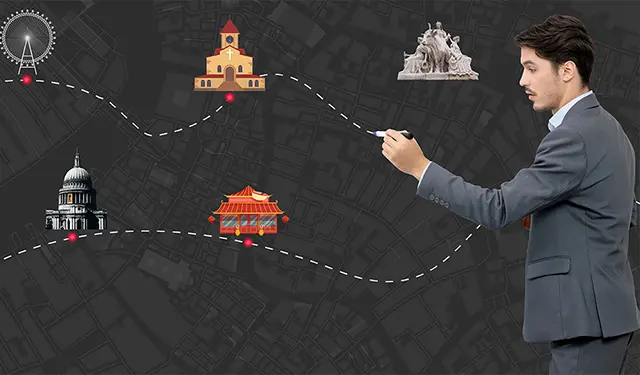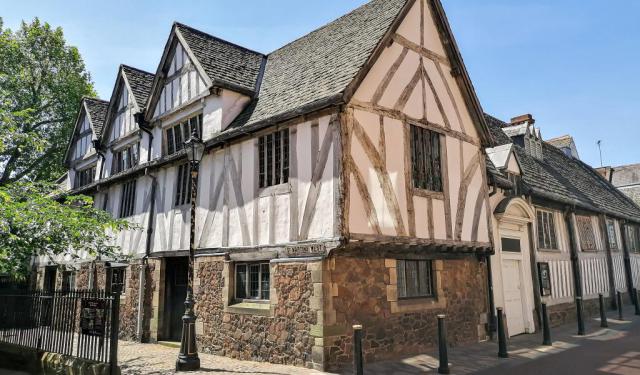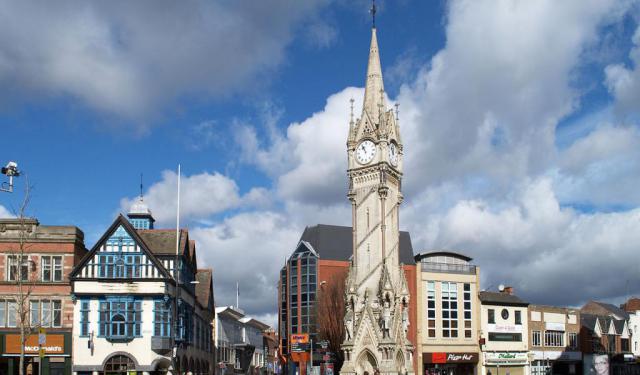
King Richard III Visitor Centre, Leicester (must see)
The King Richard III Visitor Centre is a museum dedicated to the dramatic story of England’s last Plantagenet king, from his life and reign to the extraordinary discovery of his remains centuries later. Located in Leicester, the center provides an in-depth exploration of Richard III’s legacy and the groundbreaking archaeological project that confirmed his final resting place.
For centuries, the location of Richard III’s burial remained uncertain, though historical records suggested he was laid to rest in the medieval Greyfriars friary after his death at the Battle of Bosworth Field in 1485. In 2012, a team from the University of Leicester Archaeological Services (ULAS), in collaboration with Philippa Langley and the Richard III Society, launched an excavation in a Leicester city car park, long believed to be the site of Greyfriars. Astonishingly, the king’s remains were discovered on the first day of the dig. DNA analysis later confirmed his identity, marking one of the most significant historical finds in British history.
Recognizing the global significance of the discovery, Leicester City Council transformed the former Alderman Newton's School, a Victorian-era building next to the excavation site, into a state-of-the-art visitor center. Opened on 26 July 2014, the center features exhibitions detailing Richard III’s turbulent reign, his portrayal in history, and the forensic science that led to his identification. A glass-floored viewing area allows visitors to see the original grave site within the friary’s choir.
The center’s design, led by architect Paul East of Maber Architects, skillfully integrates modern exhibition space with the historical significance of the site. The museum’s impact was further recognized in 2018, when it was awarded "Best Museum" in the Group Leisure and Travel Awards, triumphing over institutions like the British Museum and the National Railway Museum.
A compelling mix of history, science, and discovery, the King Richard III Visitor Centre offers an engaging experience for history enthusiasts and casual visitors alike, shedding new light on one of England’s most enigmatic monarchs.
For centuries, the location of Richard III’s burial remained uncertain, though historical records suggested he was laid to rest in the medieval Greyfriars friary after his death at the Battle of Bosworth Field in 1485. In 2012, a team from the University of Leicester Archaeological Services (ULAS), in collaboration with Philippa Langley and the Richard III Society, launched an excavation in a Leicester city car park, long believed to be the site of Greyfriars. Astonishingly, the king’s remains were discovered on the first day of the dig. DNA analysis later confirmed his identity, marking one of the most significant historical finds in British history.
Recognizing the global significance of the discovery, Leicester City Council transformed the former Alderman Newton's School, a Victorian-era building next to the excavation site, into a state-of-the-art visitor center. Opened on 26 July 2014, the center features exhibitions detailing Richard III’s turbulent reign, his portrayal in history, and the forensic science that led to his identification. A glass-floored viewing area allows visitors to see the original grave site within the friary’s choir.
The center’s design, led by architect Paul East of Maber Architects, skillfully integrates modern exhibition space with the historical significance of the site. The museum’s impact was further recognized in 2018, when it was awarded "Best Museum" in the Group Leisure and Travel Awards, triumphing over institutions like the British Museum and the National Railway Museum.
A compelling mix of history, science, and discovery, the King Richard III Visitor Centre offers an engaging experience for history enthusiasts and casual visitors alike, shedding new light on one of England’s most enigmatic monarchs.
Want to visit this sight? Check out these Self-Guided Walking Tours in Leicester. Alternatively, you can download the mobile app "GPSmyCity: Walks in 1K+ Cities" from Apple App Store or Google Play Store. The app turns your mobile device to a personal tour guide and it works offline, so no data plan is needed when traveling abroad.
King Richard III Visitor Centre on Map
Sight Name: King Richard III Visitor Centre
Sight Location: Leicester, England (See walking tours in Leicester)
Sight Type: Attraction/Landmark
Guide(s) Containing This Sight:
Sight Location: Leicester, England (See walking tours in Leicester)
Sight Type: Attraction/Landmark
Guide(s) Containing This Sight:
Walking Tours in Leicester, England
Create Your Own Walk in Leicester
Creating your own self-guided walk in Leicester is easy and fun. Choose the city attractions that you want to see and a walk route map will be created just for you. You can even set your hotel as the start point of the walk.
Historical Buildings
Leicester, a city in England's East Midlands, has a storied past that is vividly presented in its historical buildings. Valuable architectural monuments, they are the city's pride and as such enjoy special protection by the government.
Among such, Magazine Gateway stands as a testament to the city's medieval legacy. Originally part of its defensive walls, this structure now... view more
Tour Duration: 2 Hour(s)
Travel Distance: 2.6 Km or 1.6 Miles
Among such, Magazine Gateway stands as a testament to the city's medieval legacy. Originally part of its defensive walls, this structure now... view more
Tour Duration: 2 Hour(s)
Travel Distance: 2.6 Km or 1.6 Miles
Leicester Introduction Walking Tour
Leicester is one of the oldest cities in England, whose history goes back almost two millennia. The Romans arrived in the area around 47 AD, during their conquest of southern Britain. Following the Saxon invasion, Leicester was then captured by Danish Vikings, in the 9th century.
The settlement was first documented in the early 10th century, under the name Ligeraceaster. At the time of the... view more
Tour Duration: 1 Hour(s)
Travel Distance: 1.1 Km or 0.7 Miles
The settlement was first documented in the early 10th century, under the name Ligeraceaster. At the time of the... view more
Tour Duration: 1 Hour(s)
Travel Distance: 1.1 Km or 0.7 Miles


